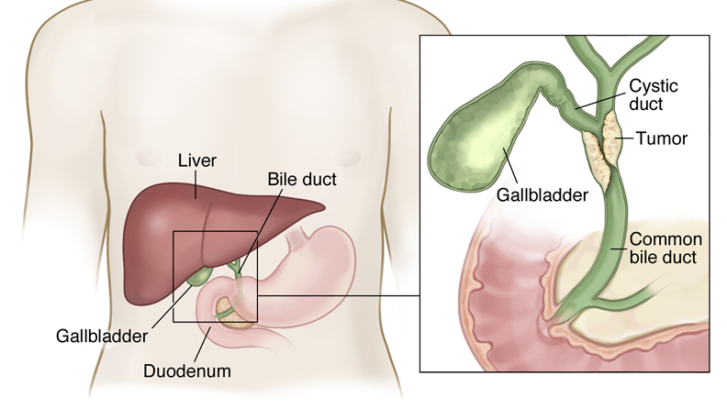

A bile duct stricture is caused by narrowing of the bile duct. The narrow bile duct prevents the bile from draining into the intestine. The bile then backs up in the liver and spills over into the blood causing obstructive jaundice?
There are many causes for biliary stricture. These causes can be benign (non-cancerous) or cancerous. Cancerous bile duct strictures are caused by bile duct cancer and pancreatic cancer. Benign (non-cancerous) bile duct strictures may develop from chronic pancreatitis, injury to the bile duct after a laparoscopic cholecystectomy and a variety of infective causes that are uncommon in the United States.
The most common cause for a benign bile duct stricture is trauma to the bile duct during a laparoscopic cholecystectomy for gallstone disease. It is estimated that approximately 0.1% to 1% of gallbladder operations may lead to injury to the bile duct with subsequent development of a bile duct stricture. In addition to injury to the bile duct, injury to the hepatic artery (the blood vessel that supplies blood to the liver) is commonly associated with a bile duct injury
Early detection of bile duct injuries is important and with appropriate treatment patients generally do well. The principles of treatment of bile duct injury include:
Treat all infections: Treatment of all infection and sepsis that may typically develop from leakage of bile or due to blockage of bile.
Repair to healthy bile duct: In the repair a segment of intestine is brought up to the bile duct and the bile duct is then sutured to the intestine. For long term healing and for good results a normal uninjured bile duct away from the site of the injury should be used. This may be difficult to accomplish in high bile duct injuries.
Location of injury determines type of procedure and results: the type of repair performed to the bile duct depends on the level of the injury. For patients who have low injuries to their bile duct finding an area of normal bile duct above the site of the injury and suturing that area to the intestine is easily accomplished for the repair. In patients whose injury is high up in the bile duct close to the liver, the repair is much more complex since finding a segment of normal bile duct above the injury may be extremely difficult. In addition to this in patients who have an associated injury to their blood vessels, the diminished blood flow to the bile duct may jeopardize the healing process after the repair.
